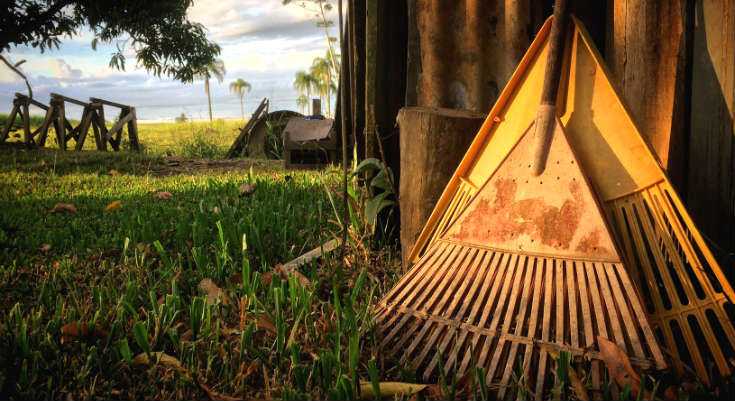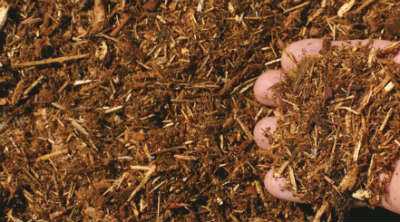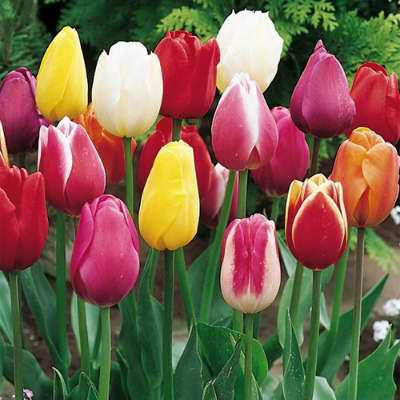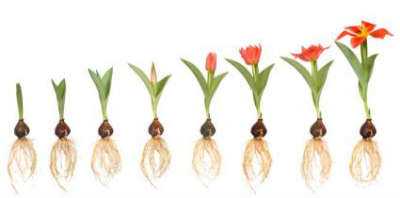Top 5 Things To Do In Your Garden This Fall

Harvest is an exciting time when gardeners can enjoy the fruit of their labor. But before taking a break during the fall and winter months, the forward-thinking gardener should take a few simple measures to ensure that the garden and yard is ready to nourish next spring’s blooms. This time we go through a short list of top 5 things to do in the garden this fall.
Feeding the soil, mulching, composting, planting bulbs, and cleaning the garden from debris are important steps towards supporting a healthy and fruitful garden in the spring and summer. Before taking a break during the off-season, get a head start on next year’s garden.
Feed the Soil
Gardens are living ecosystems consisting of billions of microscopic bacteria and fungi working to convert organic material into food and nutrients for plants. When we feed the soil, the soil will feed our plants, producing lush and fruitful gardens.
Compost adds complex microbes back into the soil. Compost that is well-rotted and decomposed does not supply gardens with nutrients- those have been used up to feed the plant already.
It does, however, supply the soil with microbes that necessary to form air and water pockets and enables the soil to store and release water and other nutrients into its new life.

A thin layer of mulch or compost protects and insulates the soil, giving it time to rejuvenate.
Organic commercial fertilizers are also available through both brick-and-mortar and online retailers. These fertilizers amend the soil by slowly releasing nutrients throughout the off-season and supplying the soil with nitrogen.
Mulching
Mulch is an invaluable asset to any garden. It is easy to make and usually completely free. Most trees have leaves that make an excellent source for mulch. First, rake up leaves in the fall or gather the leaves off the branches that have been pruned.
Spread the leaves onto the lawn in a thin layer less than two inches thick and run over it a few times with a lawn mower. Hedge trimmers can also be used, though it will be a more tedious process. The finished result should consist of shredded, dime-sized leaves. This process will help the leaves decompose more quickly.
Now, the much is ready to be spread around the garden where it will feed the microbes in the soil. Store any leftover mulch in a ventilated barrel or large trash bags with holes poked in the top for air flow. Just remember that the longer the mulch is stored, the less effective it will be.
Mulch stored without proper air flow will ferment and release toxins with high pH levels that kill plants, so be sure to store in a ventilated container.
Planting Spring Bulbs
In preparation for the following spring, some bulbs can to be planted in September and October, such as crocus, hyacinths, daffodils, and tulips.

Be sure to get them into the ground 6 to 8 weeks before the ground freezes. Bulbs do not last longer than one season, so be sure to get them planted on time.
Water them well after planting, but bulbs do not require much watering through the fall and winter unless the seasons are especially dry.
To maintain the bulbs in the spring, add some organic bulb food or mulch around the sprouts. After the bulbs have finished blooming, cut off the flower head but not the leaves.

Once the rest of the foliage turns yellow or brown, the stem can be cut down to ground level.
Clean Leaves and Fallen Trees from the Garden
Once the harvest time has passed, pull up old plants and remove weeds and other debris from the garden area. If the plants were healthy and not diseased or infested with bugs, they can be added to the compost pile.
A leaf vacuum can be a great resource when collecting leaves for compost or mulch. Check out our reviews on the best lawn sweepers here. Of course, a leaf blower is also a convenient option and certainly much easier than using a rake. We have chosen some of the best cordless leaf blowers to consider here.
Shred the leaves before composting using hedge trimmers or by running over the leaves with a lawnmower. Check out our reviews for the best cordless lawn mowers before shopping for the best one.
If it is necessary to use a chainsaw to cut up tree limbs or fallen tree trunks, be sure to select one with good safety ratings and use appropriate precautions. We have some of the most popular chainsaws rated here. Using a log splitter after cutting up the trees is a convenient and frugal way to stock up on firewood to use during the winter months.
Making Compost
Compost has been referred to as “black gold” because of its ability to amend and rejuvenate soil.
Just like reducing waste sent to landfills by general household recycling, making the most of organic waste for the purpose of composting is the responsible thing to do.
Making compost is both simple and cost effective, as it can be created from just kitchen and garden waste.
Have an area of the garden designated as a compost pile and add leaves, plants, egg shells, coffee grounds, and food scraps to the pile. Once the ingredients have begun to decompose, periodically rake the compost over the garden area to incorporate it back into the soil.
The drawback to this outdoor method is that the decomposing food left outside can attract unwanted animals into the yard. Utilizing a compost container with a lid helps disguise the smell and keep animals away.
Be sure to allow proper ventilation in the bin by drilling holes into a plastic or metal container. Just collect the garden and food scraps in the bins and once it begins to break down, spread it over the garden.
There are also convenient commercial composting bins available. Look through some of the best composting bins before deciding which method to use. To take it to the next level, alternatively, you could consider setting up a small worm farm and get the gardener’s friends to do the hard work.
Summary
Composting, mulching, planting, and cleaning are all important measures to take make in the fall that help ensure a garden’s fruitfulness the following year. It is important to think ahead and employ these simple techniques in the garden this fall.
Once these steps have been taken, it is time to enjoy the harvest and take a break! To make this break more enjoyable, why don’t you check out some of the best heaters to use in the backyard and patio? Also, if you live by a mosquito infested area, show no mercy and find the best ways to get rid of those annoying insects.
